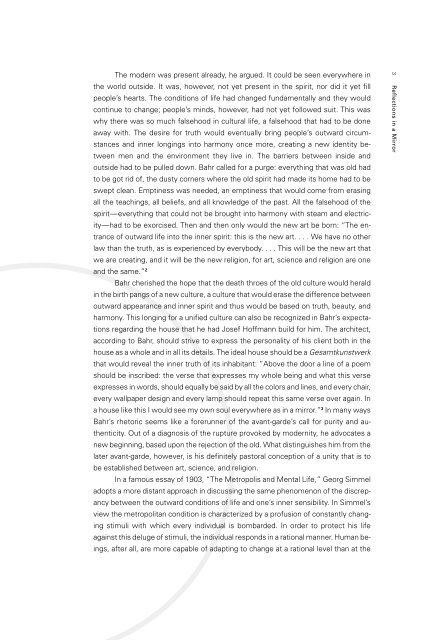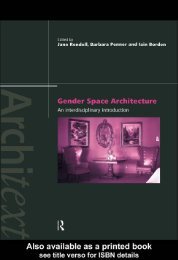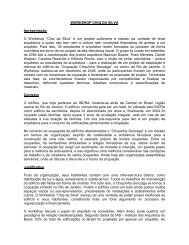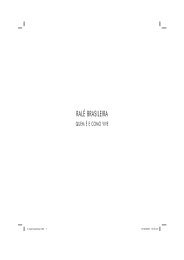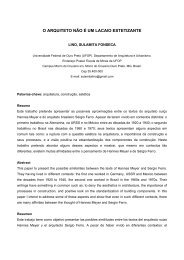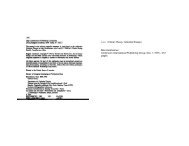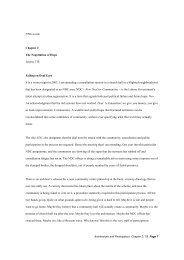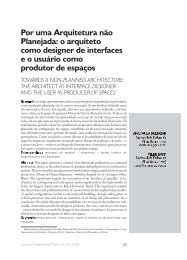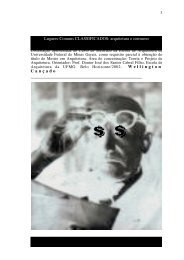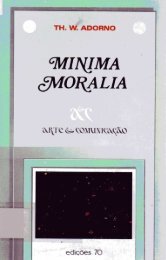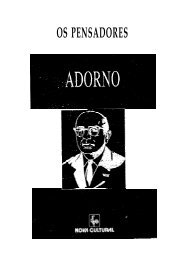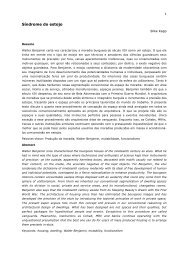Architecture and Modernity : A Critique
Architecture and Modernity : A Critique
Architecture and Modernity : A Critique
Create successful ePaper yourself
Turn your PDF publications into a flip-book with our unique Google optimized e-Paper software.
The modern was present already, he argued. It could be seen everywhere in<br />
the world outside. It was, however, not yet present in the spirit, nor did it yet fill<br />
people’s hearts. The conditions of life had changed fundamentally <strong>and</strong> they would<br />
continue to change; people’s minds, however, had not yet followed suit. This was<br />
why there was so much falsehood in cultural life, a falsehood that had to be done<br />
away with. The desire for truth would eventually bring people’s outward circumstances<br />
<strong>and</strong> inner longings into harmony once more, creating a new identity between<br />
men <strong>and</strong> the environment they live in. The barriers between inside <strong>and</strong><br />
outside had to be pulled down. Bahr called for a purge: everything that was old had<br />
to be got rid of, the dusty corners where the old spirit had made its home had to be<br />
swept clean. Emptiness was needed, an emptiness that would come from erasing<br />
all the teachings, all beliefs, <strong>and</strong> all knowledge of the past. All the falsehood of the<br />
spirit—everything that could not be brought into harmony with steam <strong>and</strong> electricity—had<br />
to be exorcised. Then <strong>and</strong> then only would the new art be born: “The entrance<br />
of outward life into the inner spirit: this is the new art. . . . We have no other<br />
law than the truth, as is experienced by everybody. . . . This will be the new art that<br />
we are creating, <strong>and</strong> it will be the new religion, for art, science <strong>and</strong> religion are one<br />
<strong>and</strong> the same.” 2<br />
Bahr cherished the hope that the death throes of the old culture would herald<br />
in the birth pangs of a new culture, a culture that would erase the difference between<br />
outward appearance <strong>and</strong> inner spirit <strong>and</strong> thus would be based on truth, beauty, <strong>and</strong><br />
harmony. This longing for a unified culture can also be recognized in Bahr’s expectations<br />
regarding the house that he had Josef Hoffmann build for him. The architect,<br />
according to Bahr, should strive to express the personality of his client both in the<br />
house as a whole <strong>and</strong> in all its details. The ideal house should be a Gesamtkunstwerk<br />
that would reveal the inner truth of its inhabitant: “Above the door a line of a poem<br />
should be inscribed: the verse that expresses my whole being <strong>and</strong> what this verse<br />
expresses in words, should equally be said by all the colors <strong>and</strong> lines, <strong>and</strong> every chair,<br />
every wallpaper design <strong>and</strong> every lamp should repeat this same verse over again. In<br />
a house like this I would see my own soul everywhere as in a mirror.” 3 In many ways<br />
Bahr’s rhetoric seems like a forerunner of the avant-garde’s call for purity <strong>and</strong> authenticity.<br />
Out of a diagnosis of the rupture provoked by modernity, he advocates a<br />
new beginning, based upon the rejection of the old. What distinguishes him from the<br />
later avant-garde, however, is his definitely pastoral conception of a unity that is to<br />
be established between art, science, <strong>and</strong> religion.<br />
In a famous essay of 1903, “The Metropolis <strong>and</strong> Mental Life,” Georg Simmel<br />
adopts a more distant approach in discussing the same phenomenon of the discrepancy<br />
between the outward conditions of life <strong>and</strong> one’s inner sensibility. In Simmel’s<br />
view the metropolitan condition is characterized by a profusion of constantly changing<br />
stimuli with which every individual is bombarded. In order to protect his life<br />
against this deluge of stimuli, the individual responds in a rational manner. Human beings,<br />
after all, are more capable of adapting to change at a rational level than at the<br />
3 Reflections in a Mirror


